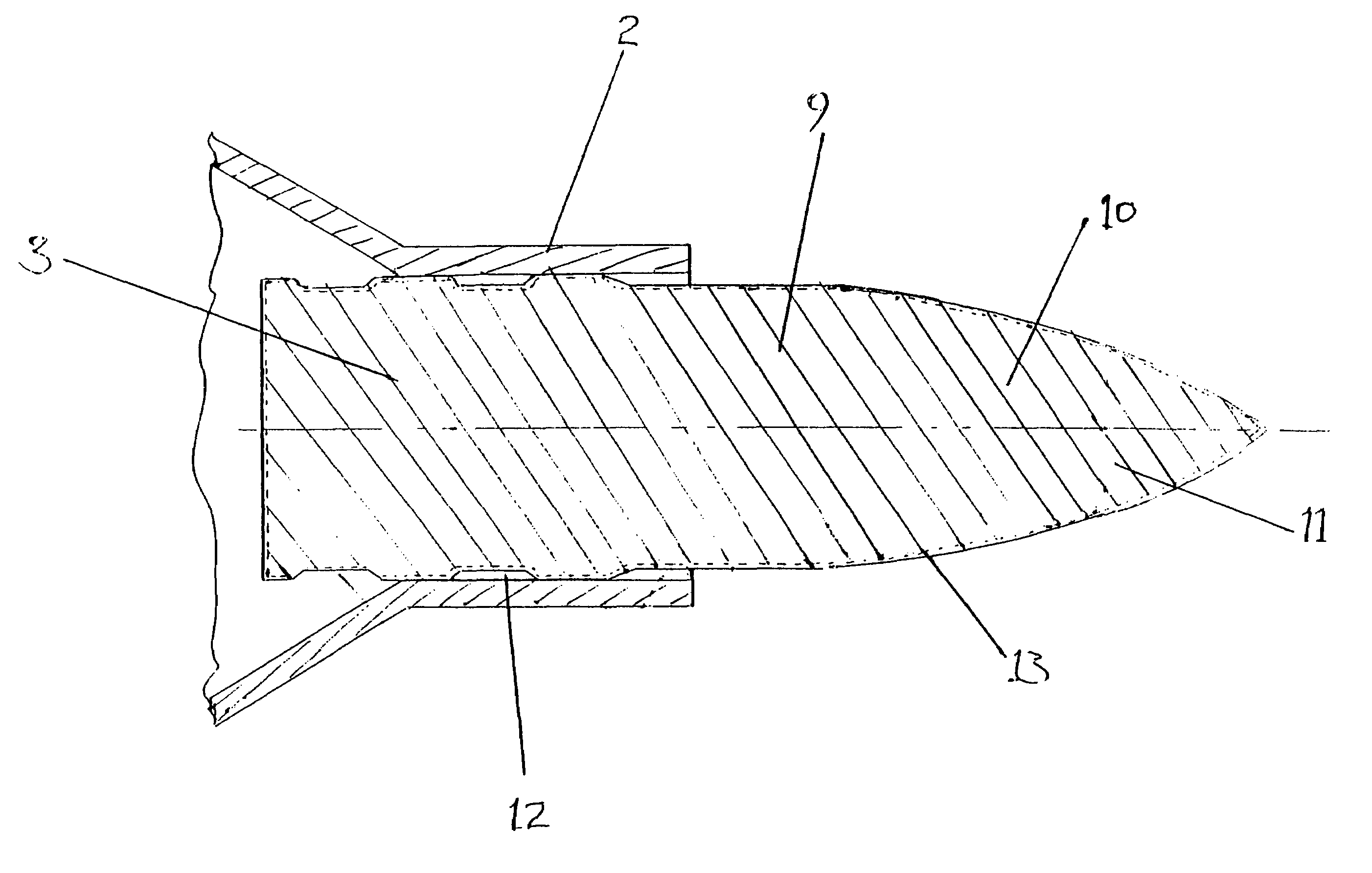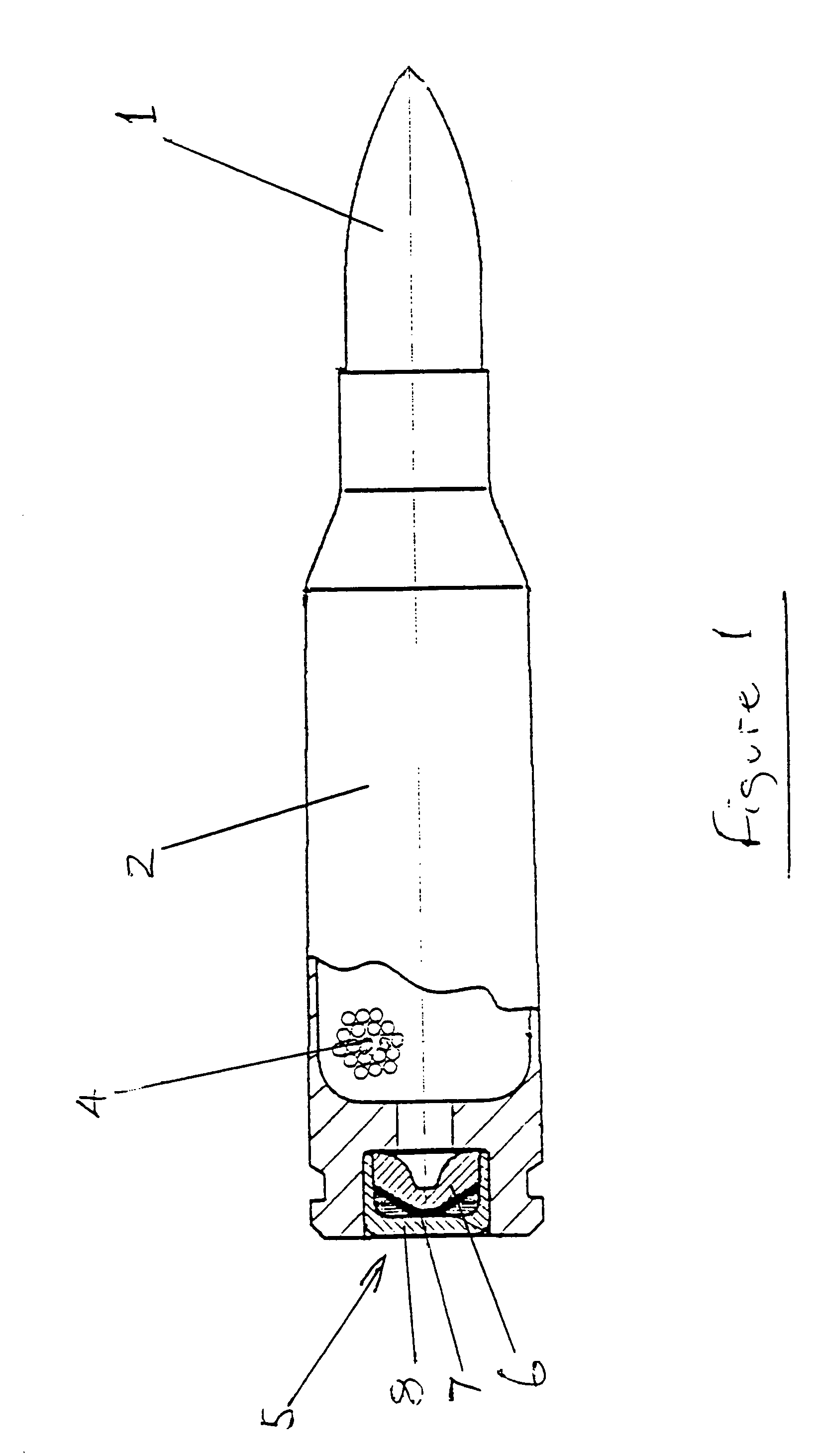4.6 mm small arms ammunition
a small arms and ammunition technology, applied in the field of ammunition, can solve the problems of steel not readily deformable, high rate of angular acceleration, and substantial wear on the barrel, and achieve the effect of reducing the coefficient of friction, easy deformation, and easy formation into the desired shap
- Summary
- Abstract
- Description
- Claims
- Application Information
AI Technical Summary
Benefits of technology
Problems solved by technology
Method used
Image
Examples
Embodiment Construction
[0028]As shown in FIG. 1, a round of small arms ammunition comprises a projectile 1, and a brass cartridge case 2 assembled thereto. The rearward portion 3 (FIG. 2) of the projectile is received within the forward part of the cartridge case, and the two components are held together by friction. The cartridge case contains a quantity of gun propellant material 4, and a percussion primer cap 5 comprising an anvil 6, a quantity of primary propellant 7 and a closure cap 8 which is received as a press fit in a recess in the rear end face of the cartridge case.
[0029]The projectile body is of elongate form and is cold formed from steel having a Vickers Hardness of at least 550 (using a 10 kg load). It can subsequently be given a heat treatment to provide the desired hardness or other physical properties. The projectile comprises a body portion 9 of substantially cylindrical form. The projectile also has a nose portion 10 forward of the portion 9, the nose portion 10 having an ogival forwar...
PUM
| Property | Measurement | Unit |
|---|---|---|
| thickness | aaaaa | aaaaa |
| thickness | aaaaa | aaaaa |
| thickness | aaaaa | aaaaa |
Abstract
Description
Claims
Application Information
 Login to View More
Login to View More - R&D
- Intellectual Property
- Life Sciences
- Materials
- Tech Scout
- Unparalleled Data Quality
- Higher Quality Content
- 60% Fewer Hallucinations
Browse by: Latest US Patents, China's latest patents, Technical Efficacy Thesaurus, Application Domain, Technology Topic, Popular Technical Reports.
© 2025 PatSnap. All rights reserved.Legal|Privacy policy|Modern Slavery Act Transparency Statement|Sitemap|About US| Contact US: help@patsnap.com



